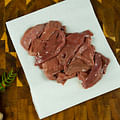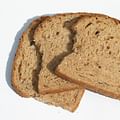🍽️ Weckewerk: A Traditional Kassel Dish Recipe
Embark on a culinary journey to the heart of Germany with this traditional Weckewerk recipe. This hearty stew, hailing from the city of Kassel, is a testament to the German knack for comfort food that warms the soul.
At the core of Weckewerk is a blend of pork meat, kidneys, and liver. This combination of ingredients may seem unusual to some, but it's a common practice in many traditional cuisines to utilize all parts of the animal. Not only is this approach economical, but it also imparts the dish with a depth of flavor that is both robust and unique.
Another key ingredient in this recipe is stale bread. While it might seem odd to include bread in a stew, it serves a crucial purpose. The bread, soaked in water and then added to the pot, acts as a thickening agent. It absorbs the flavors of the meat and spices, transforming into a soft, flavorful component of the stew.
Garlic, onions, and parsley lend their aromatic notes to this dish, creating a symphony of flavors that is quintessentially German. The result is a stew that is rich, hearty, and satisfying - perfect for those cold winter nights or when you're simply in the mood for some comfort food.
Preparing Weckewerk is a labor of love. It requires patience and attention to detail, but the end result is well worth the effort. As the stew simmers, the ingredients meld together, creating a dish that is greater than the sum of its parts.
So why not try your hand at this traditional Kassel dish? Whether you're a seasoned home cook or a novice in the kitchen, this recipe is a great way to explore German cuisine. And who knows? You might just find that Weckewerk becomes a new favorite in your recipe repertoire.
Remember, cooking is an adventure. And with this Weckewerk recipe, you're not just preparing a meal - you're creating a culinary experience that transports you to the heart of Germany. Guten Appetit!

 500g pork meat (a mix of shoulder and belly)
500g pork meat (a mix of shoulder and belly) 2 pork kidneys
2 pork kidneys 1 pork liver
1 pork liver 2 onions, finely chopped
2 onions, finely chopped 2 cloves of garlic, minced
2 cloves of garlic, minced 1 bunch of parsley, chopped
1 bunch of parsley, chopped 1 loaf of stale bread, soaked in water
1 loaf of stale bread, soaked in water Salt and pepper to taste
Salt and pepper to taste 1 tbsp vegetable oil
1 tbsp vegetable oil